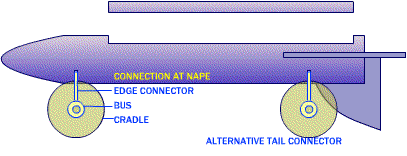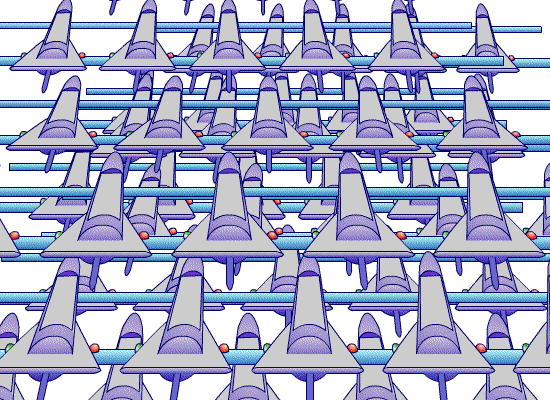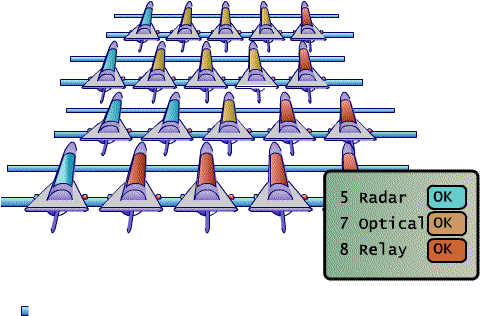
Problem
Preparing many vehicles for flight can be complicated, and the conditions can be hostile.
Background
The basic plan of field-assembly and just-in-time programming of the UAVs has many attractive characteristics. Completely mission-specific configuration and instruction can be far more effective than if the UAVs were outfitted in some generic manner.
The initial estimates are that each UAV will require two minutes to assemble another two minutes to download software.
The operator may be preparing these UAVs in unpleasant conditions (such as under hostile fire). This can be both dangerous and conducive to error. That operator would be grateful if we can make the task easier.
Solution
Our goals are:
Our plan is to establish a network before the planes leave the ground - in fact before they are even planes. By wiring the planes to one another and to the base computer before they are assembled, these four goals can be advanced.
Possible Implementation
The critical element is packaging.
Each plane is packed belly up and open, so that the payload can be attached without removing it from the crate:

While still in the crate, the fuselage is cradled in a rack. A live network bus runs through the rack and connects each of the fuselages with a simple electronic connection. For example, a simple edge connector might slide into an appropriate slot on the fuselage, at the nape of the neck or near the tail.

Each fuselage is flanked by red and green pilot lights that indicate clearly the state of the hull:

The mechanical and electronic details are not important (and are outside our expertise), but the vision simple: While still in their packing crate, the fuselages can be powered up and can assemble a network.

It is tempting to imagine this mass of machines performing some sort of parallel processing task, but our plans are simpler:
Our provisioning ideas assume that most missions are best performed by heterogeneous formations: A mission might need some planes might be equipped with radiation detectors, others use visible light and some are mere radio repeaters. This mix would be chosen during the mission-planning stage based on the requirements of the mission and the current inventory of payloads.
The base computer is actively connected to the fuselage rack as the operator exposes a layer of planes and snaps in the payloads. It can keep count of how many (color coded) payloads have been set in place. While detecting each unit, it also makes certain that it is functional.

Further Work
Connectivity
The mechanical aspects of the cradle rack and the choice of signal connector are interesting design issues. However they are peripheral to our assignment, so we do not plan on pursuing them further during Phase I.
Networking
Some relationships between the swarm mates can be established before they take flight. Networking can begin both on the wired and the radio links. We may address these issues further as we develop our networking technology.
Calibration
Extraordinary precision is expected fin comparisons of the nanosecond clock in sister planes. We expect these timings to resolve measure distances to a foot or so. In order to achieve this kind of accuracy, it is not enough to have superb clocks and perfect synchronization. we must also be able to back out the real latencies in each element of the system. A good place to measure these real world latencies is when the planes are excellent communication their relative positions are known perfectly. This describes conditions in the crate. The only problem might be the danger of blowing out the receivers if the transmitter is only inches away.
Related Topics
The power-on routine will discover, register and test the components of each craft. This implies that the existence of intercomponent protocols on the internal bus, of which these are a small subset. There may be signals passed directly to component in a plane from an outside computer,
Loading the data and the sensor payload onto the plane is simply one of the last steps of mission preparation. Our plan considers mission preparation as part of the overall command and control process.